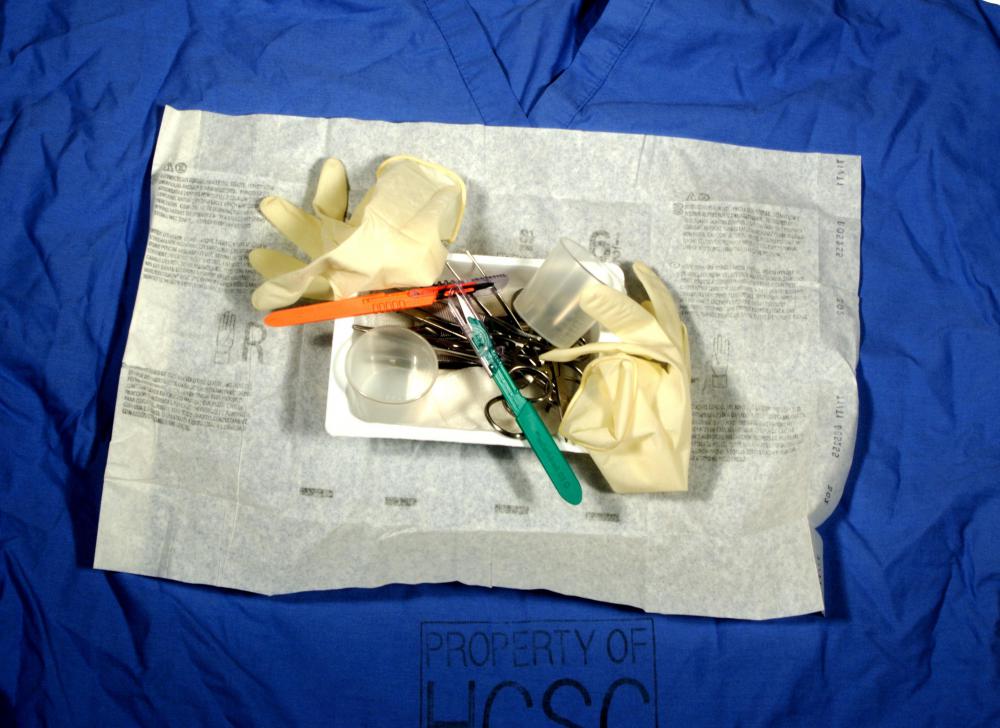At WiseGEEK, we're committed to delivering accurate, trustworthy information. Our expert-authored content is rigorously fact-checked and sourced from credible authorities. Discover how we uphold the highest standards in providing you with reliable knowledge.
How Do Medical Professionals Suture a Wound?
Medical professionals typically need a few pieces of sterile equipment and materials to suture a wound, including special needles. The needle with the suturing material is passed through the top two layers of skin on one side of the wound, and it is brought out through the bottom of the wound. Then, the needle is passed through the dermis and up through the epidermis on the opposite side of the wound. Sutures are then knotted to help keep the wound closed.
To suture a wound, a doctor will need several types of needles, depending on the type of wound. Most of these needles are curved, and some may already have the suture material attached to them.

Taper needles have sharp points and a smooth body, and doctors typically use these to suture wounds on easily penetrated tissues, like blood vessels. A cutting needle is a triangular needle with a sharp cutting edge on the inside of the blade. These types of needles are typically used on tougher tissues, like skin. A reverse cutting needle is nearly the same, but it has a cutting blade on the outside of the curve. This design makes it less likely for sutures to pull through the edges of a wound.

A needle holder and a pair of forceps are also typically used to help suture a wound. As its name suggests, a needle holder is used to hold the needle and help pass it through the layers of tissue. The forceps are used to raise the edges of the skin for easier access. A scalpel or a small pair of scissors may also be needed to trim away the edges of a jagged wound.
Before a wound is sutured, it must first be cleaned out. Doctors will need to remove any debris on the inside of the wound. An antiseptic should also be used.

To suture a wound, a doctor will often begin by grasping one edge of a wound with forceps and lifting the tissue. The needle, which is held with a needle holder, is then passed through the first and second layers of skin on one side of the wound. The point of the needle is then passed out of the bottom of the wound.
A doctor will then release the needle with the needle holder. The point of the needle is then grasped with the needle holder, and the needle and suturing material are pulled completely through. Using the needle holder, the point of the needle is then inserted into the bottom of the opposite side of the wound. It is then pushed up and out of the top layer of skin.
After all sutures are stitched into place, they are typically knotted. Square knots are most often used after doctors suture a wound. This will help keep the wound closed and ensure that the edges grow together.

To suture a wound on the outside of the body, a doctor will typically use non-dissolving sutures. These will need to be removed. To suture a wound on the inside of the body, however, dissolving stitches are usually used. These will break down over time, and will not need to be removed.
AS FEATURED ON:
AS FEATURED ON:














Discuss this Article
Post your comments